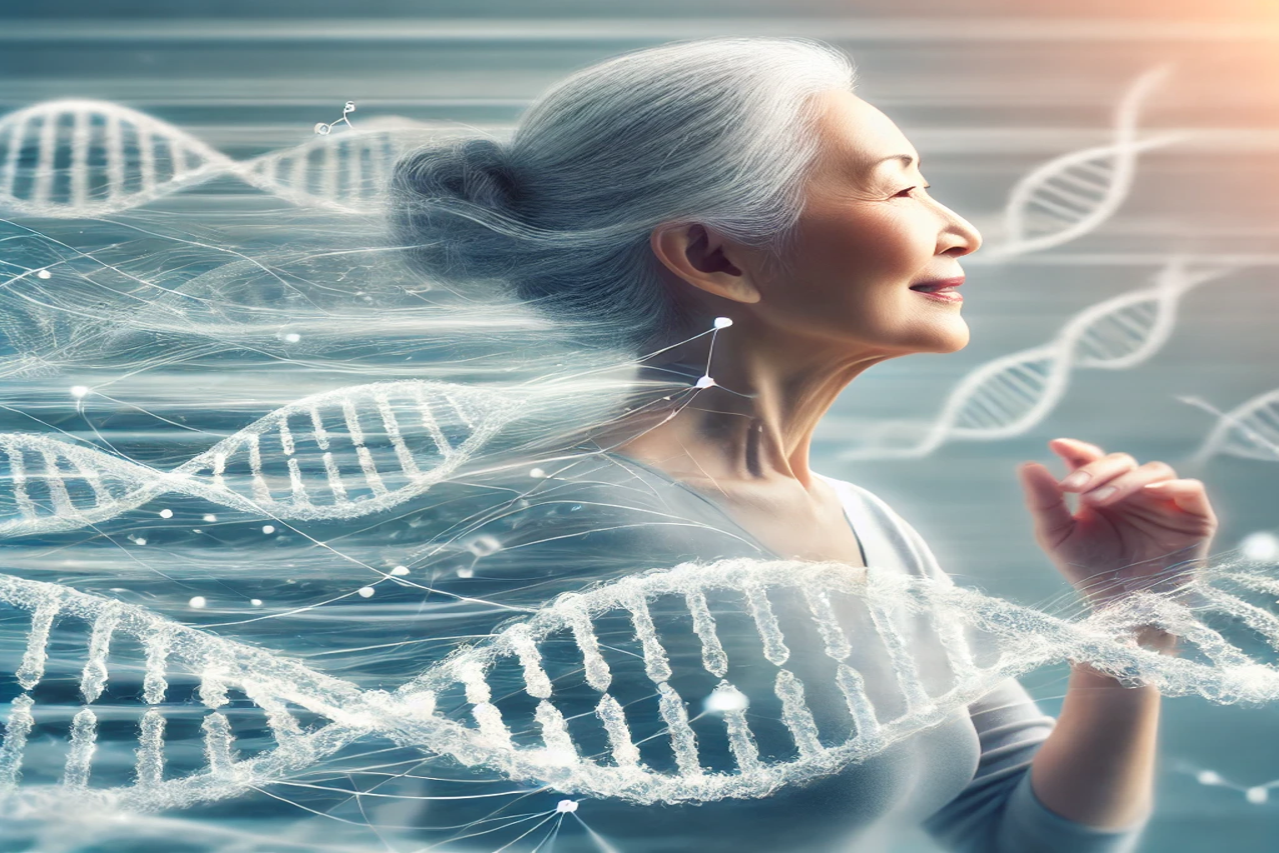As people age, maintaining muscle health becomes increasingly difficult, with muscle loss affecting not only mobility and independence but also overall health and longevity. Researchers have long understood the impact of muscle aging, yet the biological mechanisms driving this process have remained elusive.
In a groundbreaking study, scientists from Nottingham Trent University have identified previously unknown genes that appear to play a critical role in muscle aging. Using artificial intelligence (AI) to analyze complex genetic data, the researchers have opened new doors for potential therapies that may one-day help delay muscle aging and improve life quality for older adults.
Understanding Muscle Aging and Sarcopenia
Muscle aging is a natural process that affects everyone as they get older. Known as “sarcopenia” when it becomes severe, this condition is characterized by the loss of muscle mass, strength, and endurance over time. The process typically begins around the age of 30, accelerating after 60 and impacting a person’s gait, balance, and ability to perform daily tasks. Sarcopenia is a major contributor to falls, fractures, and disability among the elderly, representing a significant public health issue.
According to the Centers for Disease Control and Prevention (CDC), approximately one in three adults aged 65 and older falls each year. Sarcopenia is a key factor in this statistic, as reduced muscle function impairs balance and coordination. The World Health Organization (WHO) also reports that the global population aged 60 and over is expected to reach 2 billion by 2050, making muscle aging and its consequences an increasingly urgent concern.
The Current Treatment Landscape for Sarcopenia

Currently, physical exercise is the only recommended treatment for combating muscle aging and managing sarcopenia. Resistance training, in particular, has been shown to significantly improve muscle mass, strength, and functional ability in older adults.
However, exercise alone may not be sufficient for all individuals, especially those who are frail or have limited mobility. The discovery of genetic targets for drug development could complement exercise by providing an additional layer of intervention that preserves muscle health and delays the effects of aging.
The Role of Genetics in Muscle Aging
In their recent study, scientists at Nottingham Trent University used advanced AI models to analyze gene expression data from both younger (aged 21–43) and older adults (aged 63–79). By leveraging AI, they were able to identify around 200 genes that appear to influence, or be influenced by, muscle aging and resistance exercise. This approach allowed them to explore intricate networks of gene interactions that would have been difficult to detect using traditional research methods.
The team’s analysis revealed USP54 as one of the primary genes involved in muscle aging and degradation. Muscle biopsies from older adults showed this gene to be highly active, suggesting that it plays a significant role in advancing muscle decline. This discovery provides a new genetic target for potential drug development, offering hope for therapies that could mitigate or even prevent muscle loss in aging populations.
Artificial Intelligence: A Game Changer in Genetic Research
The use of AI in this study highlights how technology is transforming our ability to understand complex biological processes. AI algorithms, particularly machine learning models, have the unique ability to analyze vast amounts of genetic data, identifying patterns and interactions that may not be immediately apparent to human researchers.
By applying machine learning to genetic data, the Nottingham Trent team could prioritize genes most relevant to muscle aging. For instance, their algorithm isolated the top 200 genes, revealing connections between aging, muscle function, and exercise that suggest specific pathways and processes associated with muscle health. This is a significant advancement, as previous research in muscle aging had largely focused on individual genes rather than networks of interacting genes.
Beyond USP54, the researchers identified additional genes associated with resistance exercise, opening the possibility of exercise-based interventions that target these genes. Such interventions could be tailored to maximize the preservation of muscle mass in older adults, particularly those at high risk of sarcopenia-related disabilities.
Implications of Genetic Findings in Muscle Aging
The identification of these genes has profound implications for how we approach muscle health in older adults. Here’s a closer look at the potential impact of this discovery:
- Drug Development: With genes like USP54 identified as key players in muscle aging, pharmaceutical companies now have new targets for developing drugs that could slow or prevent sarcopenia. This could lead to a new class of medications designed specifically for muscle preservation in the elderly, a significant advancement over current treatments.
- Personalized Medicine: As our understanding of muscle-aging genes expands, personalized treatment plans can be developed based on an individual’s genetic profile. For example, someone with high USP54 expression might benefit from targeted therapies or specific exercise regimens.
- Improved Exercise Protocols: Discovering exercise-related genes allows researchers to design more effective, targeted exercise programs that are personalized based on an individual’s genetic predisposition, potentially maximizing benefits for muscle maintenance.
- Public Health Strategies: Widespread application of these findings could enhance public health initiatives aimed at reducing fall-related injuries and disabilities among seniors. By targeting the genetic and molecular foundations of muscle aging, it may be possible to design prevention programs that keep older adults physically active and independent longer.
A New Era in Muscle Health Research
Dr. Lívia Santos, an expert in musculoskeletal biology at Nottingham Trent University, explains the significance of these findings: “By using AI, we have identified genes, interactions, and molecular pathways that have until now remained undiscovered. Repeated analyses confirmed the significance of these genes, marking a breakthrough in our understanding of muscle aging.”
According to Dr. Santos, muscle aging remains a major public health concern due to its association with increased fall risk and disability. “As muscle mass and strength decline, older adults experience changes in gait that make them more prone to falls. They are also at an elevated risk of physical disabilities, underscoring muscle aging as a critical issue,” she added. “Understanding these mechanisms is crucial for preventing and treating sarcopenia, potentially enabling greater independence for older adults.”
AI’s Untapped Potential in Aging Research
This study marks one of the few instances where AI has been employed to investigate skeletal muscle regulation, highlighting its potential in the field of muscle aging. AI’s role in identifying and predicting the effects of sarcopenia-related genes could revolutionize aging research. In the future, researchers envision AI-assisted diagnostics and treatment plans that consider a patient’s genetic markers, lifestyle, and medical history to provide optimized solutions.
Dr. Janelle Tarum, co-researcher on the project, emphasized this point, saying, “Our study shows AI’s potential in muscle aging and sarcopenia research. This application could lead to breakthroughs in identifying genetic targets for therapeutic intervention.”
Broader Implications and Future Research Directions
With AI at the forefront, the study of muscle aging is moving into uncharted territory. Several future research directions could further advance this field:
- Longitudinal Studies: Future studies could track gene expression changes over time in a larger population, allowing researchers to observe how gene interactions evolve with age.
- Expanding AI Models: Developing more sophisticated AI models could improve the accuracy of gene identification, enabling a deeper understanding of the molecular underpinnings of muscle health.
- Combining Lifestyle Factors: Including lifestyle factors like diet, sleep, and activity levels in genetic studies may provide a more holistic view of muscle aging and how interventions can be customized to individual needs.
- Exploring Other Aging Pathways: Research could also focus on other pathways that contribute to aging in tissues beyond muscle, paving the way for comprehensive anti-aging therapies.
Moving Toward Healthier Aging
The Nottingham Trent University study underscores the promise of using genetic research and AI to delay muscle aging and enhance the health and quality of life for older adults. As researchers delve deeper into the genetics of aging, we stand on the brink of developing interventions that could redefine what it means to age.

By focusing on both preventive measures and treatment strategies, this new era of research has the potential to transform aging from an inevitable decline to a manageable, more graceful process. With continued advancements in AI and genetics, the future may hold not just longer lives but healthier, more active ones.
With aging populations on the rise globally, it’s essential for continued investment in AI-driven research on muscle health. The Nottingham Trent University study is just the beginning; further investigations are needed to translate these genetic discoveries into real-world applications. If we can unlock the secrets of muscle aging, the possibilities for enhancing independence, quality of life, and longevity for older adults are vast.
Are you interested in how AI is changing healthcare? Subscribe to our newsletter, “PulsePoint,” for updates, insights, and trends on AI innovations in healthcare.




